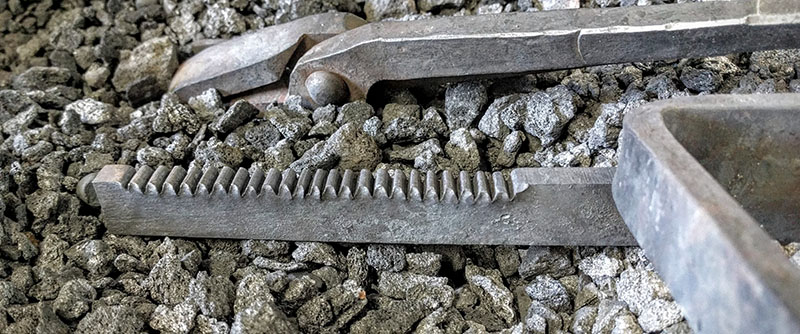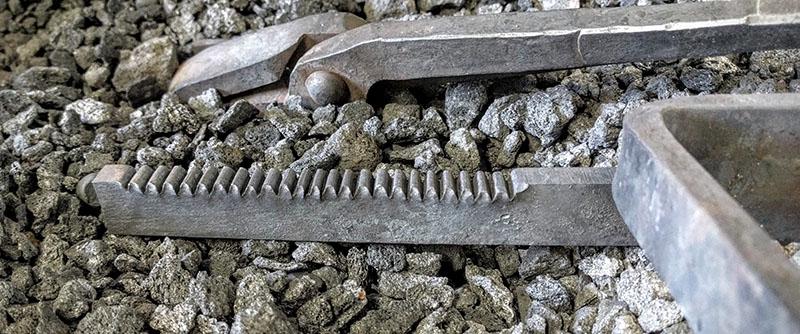It’s been a while since I have updated the blog on my quest to construct a wolf’s tooth spear. Here is the latest series of experiments. The basic approach is to take a bar of high-carbon tool steel and split it in the middle either with a bandsaw or by using a hot chisel. The drawback of the hot chisel is that it creates cuts that are not square. It requires the steel to be squared up afterwards with a file.
To create teeth in the high-carbon steel, I am using a double up chisel in which the cutting edge of the chisel points is about 1/8in apart. I do one pass in which each pair of teeth gets a couple hammer blows and then do another pass to square the teeth back up. Adjacent teeth tend to move a little bit when the next set of teeth is being created. The result looks as follows:
Afterwards, I forge wrought iron in a 3/8in square bar that is hot forged into the teeth. This can either happen with a hammer and a helper or by using a hydraulic press. The wrought iron needs to be hot and squishy. This creates matching impressions in the wrought iron. After cleaning up with a wire brush, the pieces are fit into each other and forge welded. This process needs to be done carefully since I don’t want to draw out the steel. Here is one side after forge welding:
The resulting pattern looks very similar to original finds. Although the mono steel does not show any forging lines, the grain in the wrought iron, clearly shows the process:
Now, it’s time to forge the spear for real.
